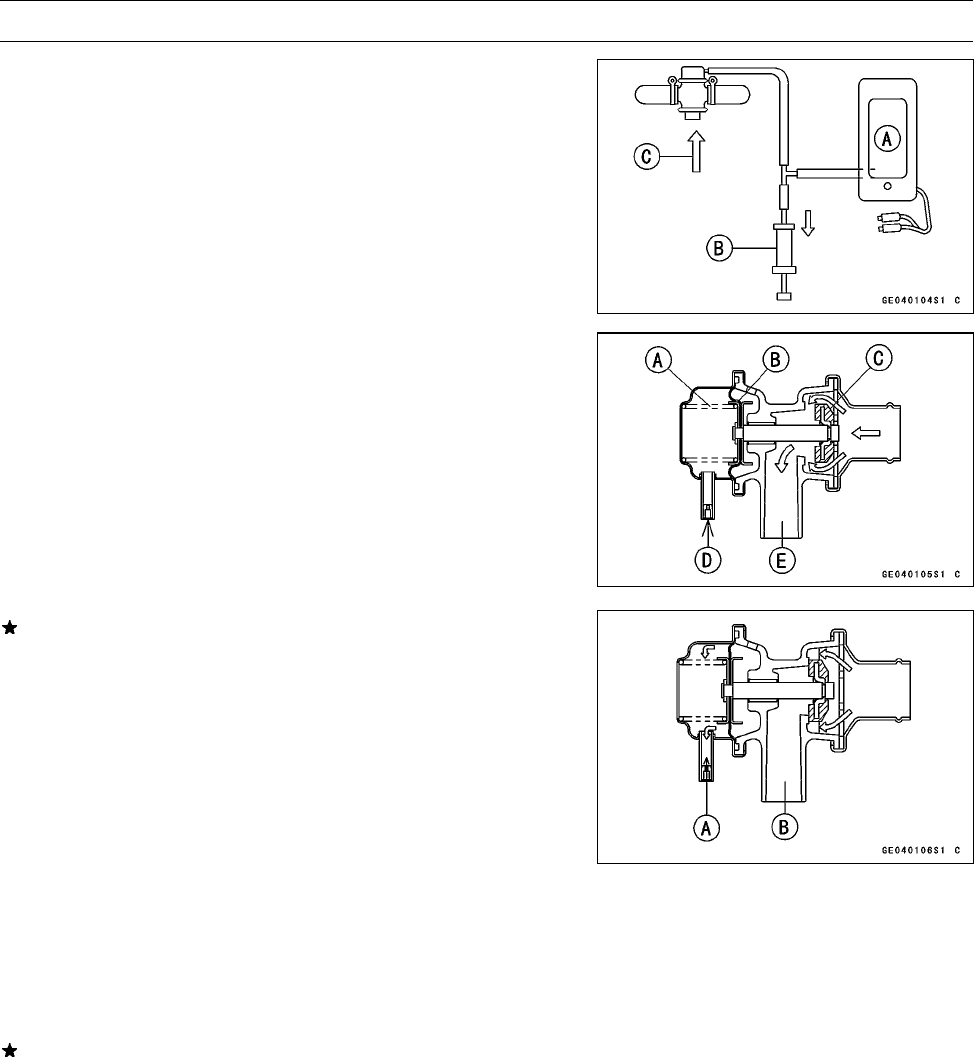
ENGINE TOP END 5-11
Clean Air System
Vacuum Switch Va lve Test
•
Remove:
Vacuum Switch Valve (see Vacuum Switch Valve Re-
moval)
•
Connect a vacuum gauge [A] and syringe [B] or fork oil
level gauge to the vacuum hoses as shown.
Special Tool - Fork Oil Level Gauge: 57001–1290
Air Flow [C]
•
Gradually raise the vacuum (lower the pressure) applied
to the vacuum switch valve, and check the valve opera-
tion. When the vacuum is low, the vacuum switch valve
should permit air to flow. When the vacuum raises to
valve closing pressure, it should stop air flow.
Spring [A]
Diaphragm [B]
Valve [C]
Low Vacuum [D]
Secondary Air Flow [E]
If the vacuum switch valve does not operate as described,
replace it w ith a new one.
NOTE
○
To check air flow through the vacuum switch valve, just
blow through the air cleaner hose.
Vacuum Switch Valve Closing Pressure (Open → Close)
Standard: 4 1 ∼ 49 kPa (310 ∼ 370 mmHg, 6.0 ∼ 7.1 psi)
High Vacuum [A]
Secondary air cannot flow [B]
Clean Air System Hose Inspection
•
Be certain that all the hoses are routed without being flat-
tened or kinked, and are connected correctly to the air
cleaner housing, vacuum switch valve, #1 and #4 carbu-
retor holders and air suction valve covers.
If they are not, correct them. Replace them if they are
damaged.


















